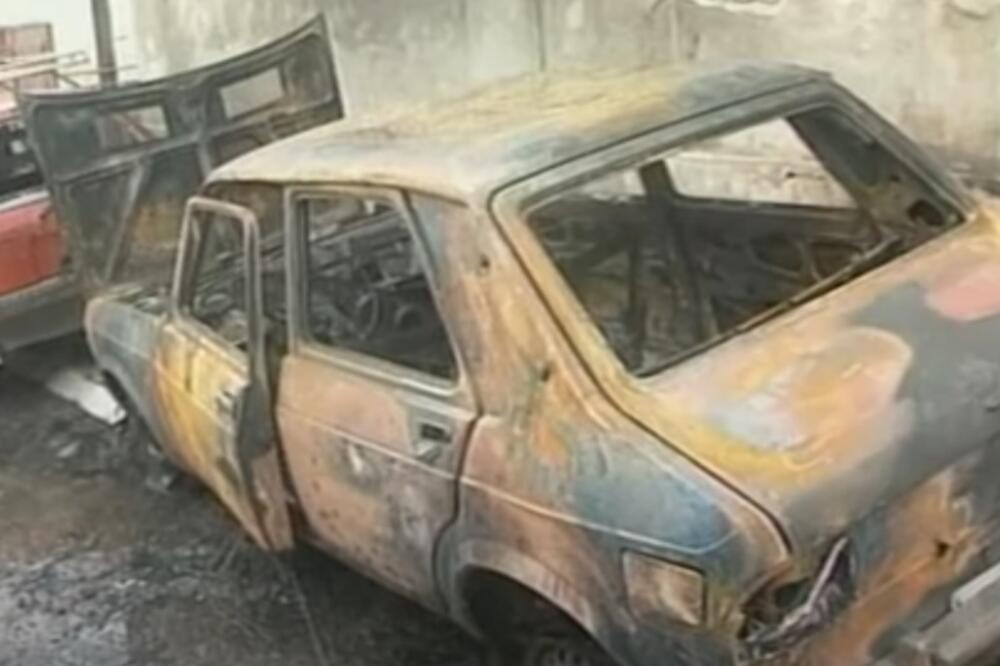The beginning of spring arouses special emotions among the citizens of Serbia, the days are getting nicer, but people are still sad. On the 25th anniversary of the beginning of the bombing of Yugoslavia, Deutsche Welle (DW) spoke to people from Niš and Aleksinac.
In those first days, the bombs bypassed Nis, but people prepared shelters in basements and carried out air raids there. Those who could, took refuge in the countryside.
So 26-year-old Ljiljana Spasić, seven months pregnant, went with her husband and brother to Blace, 50 km away, to her father-in-law and mother-in-law. She came to Niš for regular check-ups before giving birth. Fate decreed that one arrival would be fatal.
"I want to buy cherries"
"She had an appointment, she came to perform it, and she stayed to sleep. Well, if it hadn't been like that, she might be alive today. That May 7, her mother-in-law said she was going to the market, and Ljiljana said - I will I'm with you too, I want to buy cherries," says Miloje Ilić, father of the deceased Ljiljana Spasić, 25 years later, with a trembling voice.
"What to do, life had to go on, people went to the market. It was Friday when cluster bombs were thrown in the center of the city, where the University building and the green market are. Her mother-in-law was wounded, lost her leg, and "Ljiljana died immediately," says Miloje Ilić, and his wife Radmila fills him in on painful pauses.
"We were in the cottage and we knew that Niš had been bombed, and we knew that people had died, but until around five in the afternoon our son appeared at the door, we did not know that Ljiljana was there. Two lives were lost".
"The entire country celebrates March 24 as the national day of the beginning of suffering, and we also have a personal day, a day of personal sadness," says Miloje. He also says that the wound never healed. When asked if he was angry, he answered: "And who should I be angry at?", adding that innocent victims should never be forgotten. But, since then, the Ilići do not like spring, and the first cherries cause a special sadness in them.
On that day alone, 15 other people were killed with Ljiljan in the very center of the city, and eighteen of them were wounded. Niš was the most bombed city and the only urban area covered with cluster bombs.
The NATO bombing of the Federal Republic of Yugoslavia began on Wednesday, March 24, 1999 at exactly 19:45.
During the 78 days that it lasted, numerous Niš settlements and the city hospital were bombed. There are still no official data on how many people died during the bombing, and unofficial data count 26 civilian victims.
There is also no exact number of deaths for the whole of Serbia. According to Serbian sources, between 1.200 and 4.000 civilians died, and according to Human Rights Watch, between 489 and 528 civilians.
Aleksinac: Hospital, health center, settlements and hell street
Even small Aleksinac, a mining town in the south of Serbia, was bombarded with rockets in six attacks. Again, the city health center, hospital and urban settlements. Two attacks were fatal, on April 9 and May 28, when entire neighborhoods were leveled and one street in Aleksin is still called the street of hell. 24 locals died.
"For me, it's not collateral damage, it's a mistake, a historical and inhuman mistake," says Dragoslav Nenadović, who at the time was a city official and a member of the crisis war headquarters.
With the reports and data he had at that time, Dragoslav wrote, as he says, the tragic history of Aleksinac, "The Way of Mercy", because he wants to never forget what happened to his place.
"In relation to the number of inhabitants and the size of the city, Aleksinac suffered the greatest damage. We did not have any military goals, but no institution remained intact at that time. Even the Japanese at that time said that Aleksinac was the Serbian Hiroshima. That is why the reconstruction of Serbia after the bombing, if you remember, started from Aleksinac. We rebuilt the city, but we can never take human sacrifices," says Dragoslav and claims that according to some estimates, Aleksinac alone is estimated to have 300 million euros of damage, but that war reparations have not yet been came
He is proud of his fellow citizens for being very united during the bombing and for helping each other. While he is saying that, a woman in her later years approaches the monument with the list of dead Aleksin residents with a suitcase in her hand.
This is Zorica Radojičić Luković, who comes every year to mark the beginning of the bombing because she lost her parents in that very place.
"It was a family house, our children were born there, our grandchildren gathered there, but only the parents were there that day. We came as soon as we heard about the tragedy, they were buried, and we spent 20 hours removing brick by brick let's just get to the body. On this stretch to the Health Center, two people died in every house. It's always hard to bear when you lose your loved ones, but when you lose them in this way, it's especially hard," says Zorica.
She adds that she is also hurt by the fact that there is no proof that there used to be a house there, family photos were burned and everything that indicated that someone once lived there.
Of the 48 shrapnel in the body, 45 remained
Đorđe Petrović has mixed feelings every spring - he is sad because of the friend he lost, happy because he survived.
Mobilized at that time, Đorđe, today very successful in the production of public events, was in Klina in Kosovo in 99. "There were a few rockets, but when they saw that they didn't do anything, they turned on the cluster bombs, and there was a yellow field all around us," he remembers.
"It was like in a movie. Two people died that day, and I was the most seriously wounded with 48 shrapnel all over the left side of my body. I was lucky, nothing went into the bone, everything went into the flesh, and the doctors say that that muscle mass, because I played sports, was crucial. Three came out and I still have 45 shrapnel, one a centimeter from my heart, 14 shrapnel in my left tricep alone," says Đorđe and points out how lucky he was - one cassette the bomb was planted 10 cm from his left leg.
"From that moment on, I'm alive. Whether it's sunny or rainy, it's a sunny day for me. I could have died. Every morning when I wake up, I go to wash myself, tidy up, hit my cheeks and say - Alive si! I've been living here for 25 years".
Bonus video:





